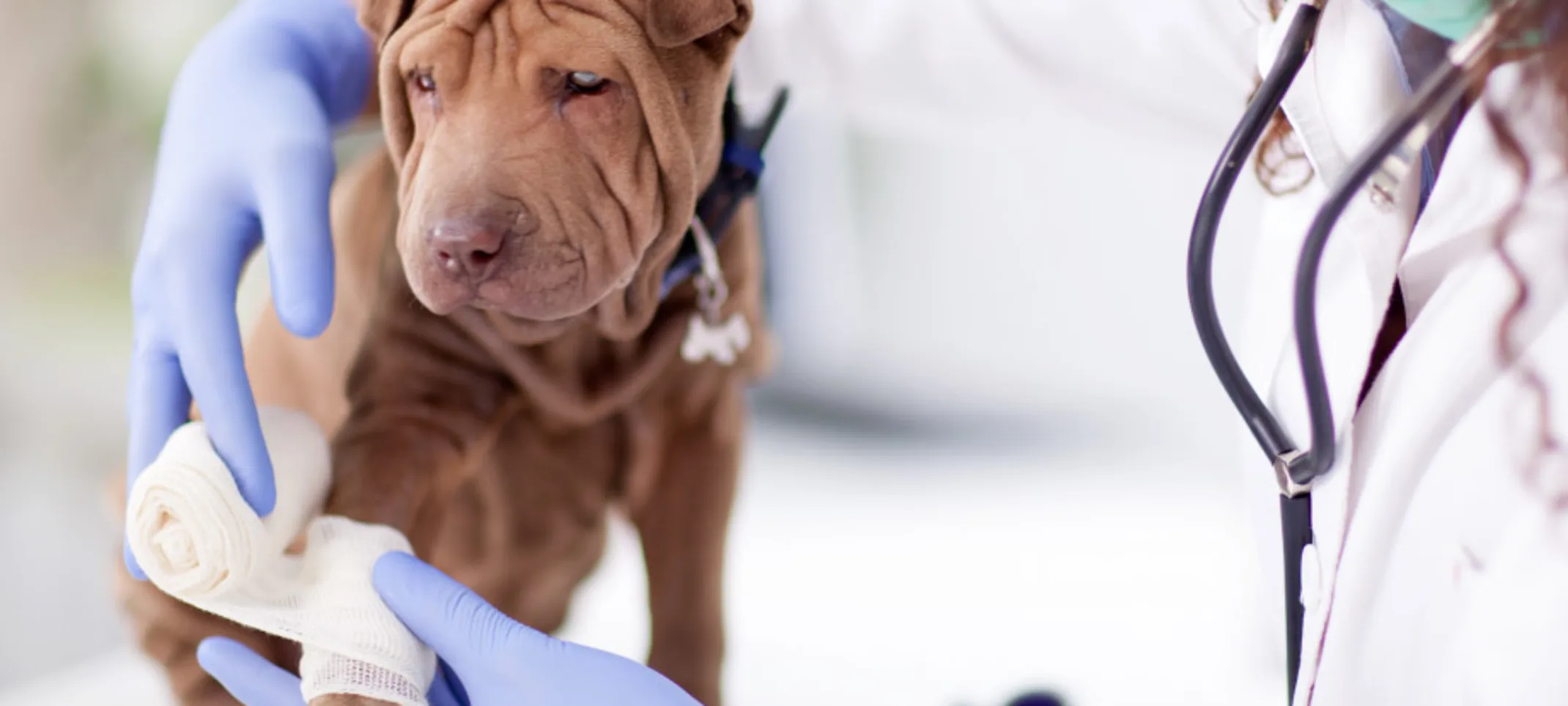Tampa Bay K9 Rehabilitation Center
Knee Injuries
When your dog tears its cruciate ligament, it is not a fun time for your pet. Unfortunately, most dog owners do not realize that their canine friend can rupture its cruciate. Cruciate ligament injury, however, is a common injury in dogs.

CCL Rupture – In dogs and cats the stifle (knee) is in a constant state of partial flexion, unlike a human knee. It is stabilized by several ligaments but the most common ligament that becomes injured is the cranial cruciate ligament (CCL), which correlates to the anterior cruciate ligament (ACL) in humans. If the CCL ruptures completely, it will be diagnosed during a physical exam. It is common that during the complete tear of the CCL, damage also occurs to the medial meniscus. The medial meniscus is a cartilage stabilizing cushion that the bottom of thigh bone rests on primarily. Dr. Brown performs CBLO’s to stabilize full and partial CCL tears. Rehabilitation therapy following CBLO, TPLO, TTA and lateral suture repair surgeries can improve return to function 20% more than without rehab therapy.
Partial Knee Ligament (CCL) Tear – Full CCL tears are straightforward to diagnose. Partial tears are a bit more difficult to diagnose definitively. There are five symptoms of CCL instability:
1. Positive Sit Test – When sitting, a dog will displace the injured pelvic limb either externally or internally because it’s painful to place in the normal position.
2. Joint Effusion – A cruciate tear will cause a buildup of fluid in the joint. This is determined by palpation of the patellar tendon compared to the normal other knee. A normal joint easily allows for palpation of the tendon. Joint effusion won’t allow this.
3. Extension/hyperextension of the knee is painful.
4. Tibial transtation/drawer sign will be noted during the exam
5. X-ray evidence – infrapatellar fat pad sign +/- osteoarthritis and joint effusion.
An informal study of over 100 dogs who had partial CCL tears repaired by TPLO or the newer CBLO procedure showed complete healing of the CCL one year post op. Therefore, repairing a partial tear before it becomes a full tear will greatly reduce post operative morbidity.
WHAT CAUSES THE INJURY?
The cranial cruciate ligament in dogs is similar to the anterior cruciate ligament in humans. The word cruciate stems from the fact that two ligaments cross over each other in the middle of the knee. These are the caudal cruciate and cranial cruciate ligaments. Cruciate injury or rupture can happen as an acute or chronic injury.
An acute injury can happen during vigorous or strenuous activity, especially if your dog only engages in occasional vigorous activity. Unlike humans, however, dogs can suffer chronic cruciate injury from daily wear and tear on the knee joints. This is because of the angle of the knees of dogs, referred to as the tibial plateau angle.
When there is a tear or injury to CCL or cranial cruciate ligament, the shin bone slides forward. Dogs that suffer this type of injury experience a lot of pain and cannot walk normally. This instability subsequently damages the surrounding cartilage, which can lead to osteoarthritis.
REPAIR OPTIONS FOR TORN CCL
Surgical stabilization of the dog’s knee joint is one of the most popular treatment options for a torn CCL. Most veterinarians recommend surgery as soon as possible to minimize the risk of irreversible or permanent joint damage as well as relieve pain.
Veterinarians use different surgical techniques to correct CCL rupture or injury. Each surgical procedure comes with its benefits and potential risks. Therefore, it is essential to work with a skilled and experienced veterinarian. He will guide you through the decision-making process and recommend the best surgical option for your pup. Some of the common options include:
CRUCIATE LIGAMENT REPAIR (CBLO)
CBLO is a state-of-the-art surgical procedure based on the more common tibial plateau leveling osteotomy or TPLO. However, CBLO offers certain unique advantages over other cruciate ligament repair procedures. These include great passive stability, and the bone cut is outside of the knee joint. Also, it does not involve the growth plate; therefore, it is ideal for dogs of all ages, and there is reduced damage to the articular cartilage over time. CBLO offers a faster healing process and excellent long-term and short-term functional results. Finally, a CBLO repair results in the weight-bearing area of the joint being positioned centrally rather than on the back edge of the tibia as seen with a TPLO repair.
TIBIAL TUBEROSITY ADVANCEMENT (TTA)
TTA surgery advances the tibial tuberosity which changes the patellar tendon relationship with the tibial plateau. It does not account for the actual slope of the tibial plateau; therefore, it may not result in proper stabilization with dogs that have excessive tibial plateau angles.
TIBIAL PLATEAU LEVELING OSTEOTOMY (TPLO)
This procedure also changes the angle on the knee’s weight-bearing surface. It provides stability while walking and reduces future inflammation of the knee joint. The TPLO has been the gold standard repair for large breed dogs for decades until the CBLO was discovered.
